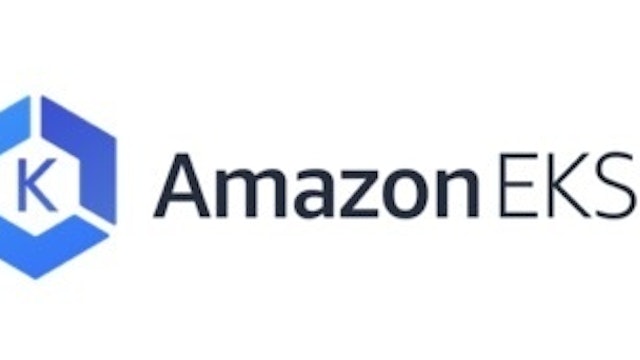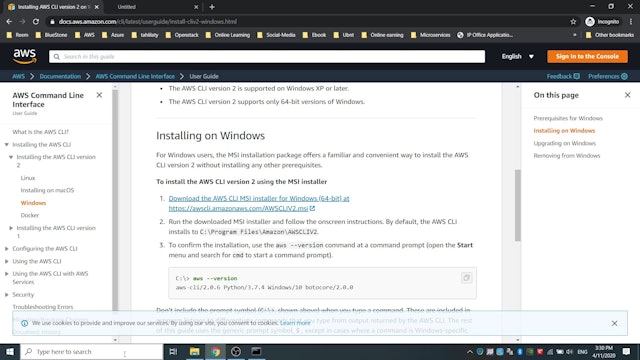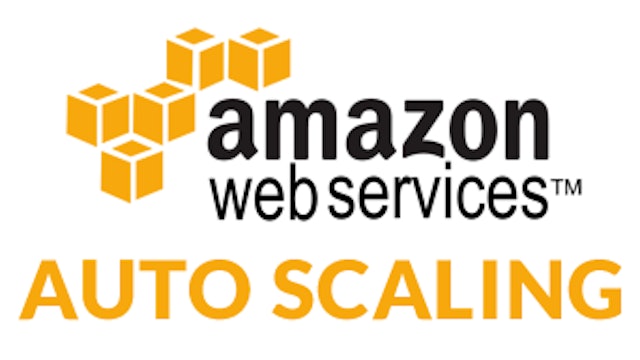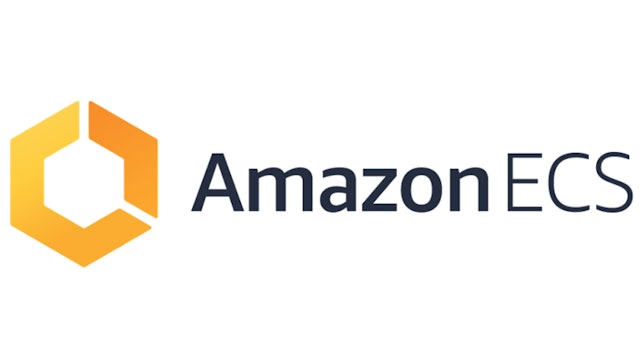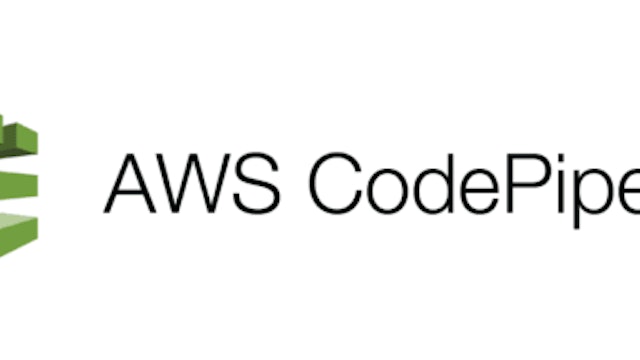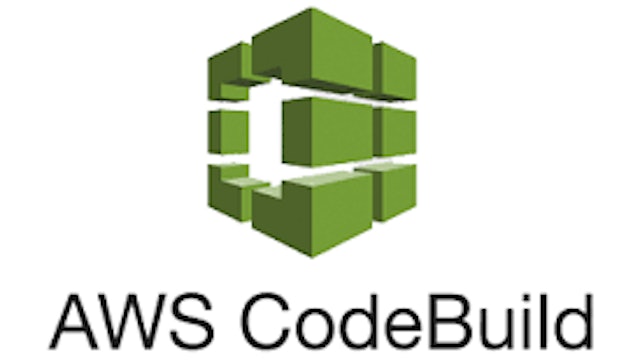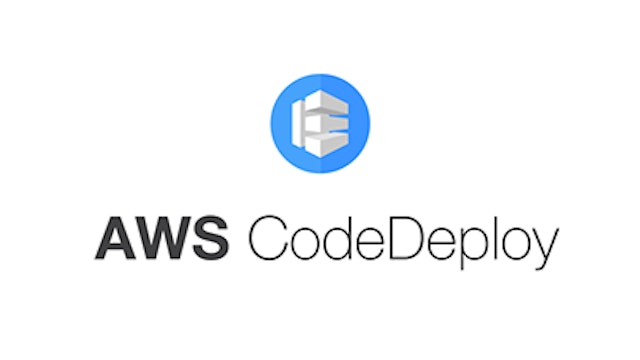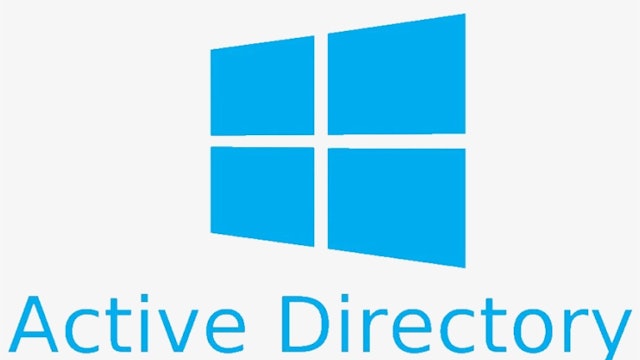Latest Videos
-
Create a Kubernetes Cluster with Amazon EKS
This AWS EKS walkthrough helps you to create all of the required resources to get started with Amazon EKS using the AWS Management Console. In this tutorial, you manually create each resource in the Amazon EKS or AWS CloudFormation consoles. At the end of this tutorial, you will have a running Am...
-
AWS Amplify: Create a web application using AWS Amplify
This tutorial will walk you through the steps to create a simple web application using AWS Amplify. You will learn:
Hosting: Build and host a React application on the AWS Global content delivery network (CDN)
Authentication: Add auth to your app to enable sign-in and sign-out
Database and Storage... -
Create a CodeCommit Repository, Add Files, Initiate Pull Requests
In this tutorial we will look at how to get started with Amazon's CodeCommit version control service. We will see how to create a repository, add files, view repository contents and create a pull request. You can follow along with this tutorial at:
https://docs.aws.amazon.com/codecommit/latest/...
-
Installing AWS CLI version 2 on Windows
This video describes how to install, upgrade, and remove AWS CLI version 2 on Windows.
https://docs.aws.amazon.com/cli/latest/userguide/install-cliv2-windows.html -
Creating a Cloud Watch Alarm to Monitor Your Estimated AWS Charges
You can monitor your estimated AWS charges by using Amazon CloudWatch. When you enable the monitoring of estimated charges for your AWS account, the estimated charges are calculated and sent several times daily to CloudWatch as metric data.
Billing metric data is stored in the US East (N. Virgin...
-
Amazon EC2 Auto Scaling Walkthrough
This tutorial walks you through the process for setting up pieces needed to create a basic infrastructure for Amazon EC2 Auto Scaling.
-
Create a simple CloudFront Distribution to distribute static content
The procedures in this section show you how to use CloudFront to set up a basic configuration that does the following:
Stores the original versions of your objects in one Amazon Simple Storage Service (Amazon S3) bucket
Distributes content such as text or graphics
Makes your objects accessible...
-
Deploy Docker Containers on Amazon Elastic Container Service (Amazon ECS)
Amazon Elastic Container Service (Amazon ECS) is the Amazon Web Service you use to run Docker applications on a scalable cluster. In this tutorial, you will learn how to run a Docker-enabled sample application on an Amazon ECS cluster behind a load balancer, test the sample application, and delet...
-
AWS CodePipeline: Set up a Continuous Deployment Pipeline Using S3
In this tutorial, you will learn how to create an automated software release pipeline that deploys a live sample app. You will create the pipeline using AWS CodePipeline, a service that builds, tests, and deploys your code every time there is a code change. S3 will be used as the source location ...
-
AWS Dynamodb - Create and Query a NoSQL Dynamodb Table
In this tutorial, you will learn how to create a simple table, add data, scan and query the data, delete data, and delete the table by using the DynamoDB console. DynamoDB is a fully managed NoSQL database that supports both document and key-value store models. Its flexible data model, reliable p...
-
Leverage the message filtering feature of Amazon (SNS)
Filter Messages Published to Topics
with Amazon Simple Notification Service (SNS) and Amazon Simple Queue Service (SQS)In this tutorial, you will learn how to leverage the message filtering feature of Amazon Simple Notification Service (SNS). The message filter feature enables endpoints subscri...
-
Send Fanout Event Notifications with Amazon SQS and Amazon SNS
Send Fanout Event Notifications with Amazon SQS and Amazon Simple Notification Service. Learn how to implement a fanout messaging scenario using Amazon Simple Notification Service (SNS) and Amazon Simple Queue Service (SQS). In this scenario, messages are "pushed" to multiple subscribers, which ...
-
Create an Amazon Aurora Global Database deployment that spans multiple regions.
In this tutorial, you will learn how to create an Amazon Aurora Global Database deployment that spans multiple AWS regions and replicates your data with no impact on performance. Aurora Global Database provides disaster recovery from region-wide outages and enables low-latency global reads.
Amaz...
-
Create a deployable version of your source code with AWS CodeBuild
In this tutorial, we will use AWS CodeBuild to build a collection of sample source code input files (build input artifacts or build input) into a deploy-able version of the source code. Specifically, we will instruct CodeBuild to use Apache Maven, a common build tool, to build a set of Java class...
-
Use CodeDeploy to Deploy an Application to an Amazon EC2 Auto Scaling Group
In this tutorial, you'll use CodeDeploy to deploy an application revision to an Amazon EC2 Auto Scaling group. Amazon EC2 Auto Scaling launches Amazon EC2 instances using predifined conditions, and then terminates those instances when they are no longer needed. Amazon EC2 Auto Scaling can help Co...
-
Set Up AWS Federated Authentication with Active Directory Federation Services
In this tutorial, we will walk through how to set up AWS Identity and Access Management (IAM), federated sign-in through Active Directory (AD) and Active Directory Federation Services (ADFS). With IAM, you can centrally manage users, security credentials such as access keys, and permissions that ...



